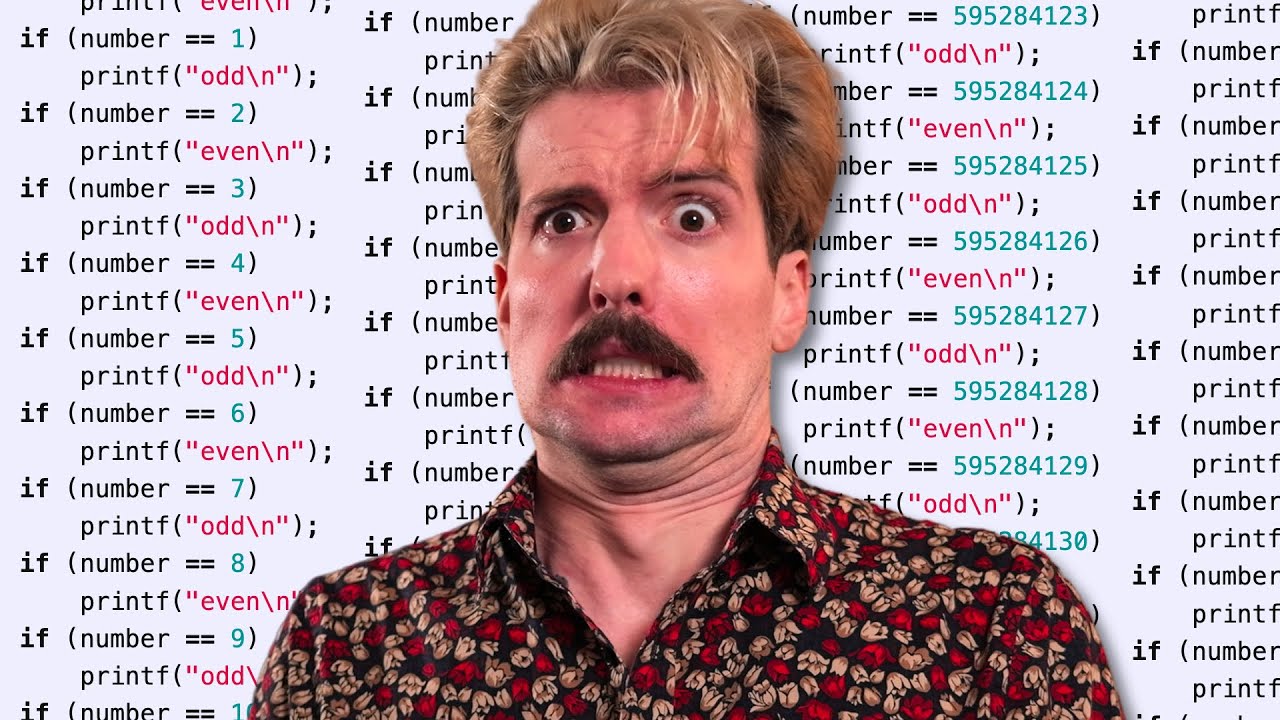Making 4 Billion If Statements For Some Reason...

Making 4 Billion If Statements: Implementing isEven the Hard Way
In this article, the author takes on an interesting challenge of implementing the isEven function in the hardest possible way. Instead of using a simple modulo operator to determine if a number is even or odd, the author decides to create a program that consists of 4 billion nested if statements!
The article starts by explaining the motivation behind this challenge, which is to demonstrate the importance of efficient programming and avoiding unnecessary complexity. The author acknowledges that this is an extreme and impractical approach, but it serves as a thought-provoking exercise.
The first step is to convert the problem into its simplest form by using the C programming language. The author creates a C program that utilizes a recursive function containing if statements to determine if a given number is even. The program starts with a base case where zero is considered even, followed by recursive calls to check smaller numbers.
To further complicate matters, the author decides to implement this program in Python, increasing the number of if statements exponentially to reach 4 billion. The program is run, and unsurprisingly, it takes a significant amount of time to complete. The article highlights the inefficiency of this approach and the importance of using more efficient algorithms.
But the chaos doesn't stop there. The author goes even further and tries to implement this program in Assembly language. With the help of an assembly emulator, they write the necessary code to evaluate 4 billion nested if statements. The author walks through the assembly code and explains the logic behind each instruction.
After running the Assembly program, the author is met with an unsurprising outcome - an extremely long execution time. The article concludes by emphasizing the importance of using efficient algorithms and techniques to solve problems and how this extreme example highlights the absurdity of taking a convoluted approach.
In summary, this article takes on a challenging and impractical task of implementing the isEven function using 4 billion nested if statements. It showcases the inefficiency of such an approach and highlights the significance of using more efficient algorithms for solving problems.